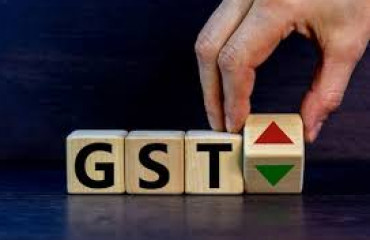
ICEA said that GST rates on mobiles and components should be brought down to 12% and 5%
NEW DELHI : Mobile phone sellers in India have sought a revision of the goods and services tax (GST) applied to mobile phones in the country.
GST rates on mobile phones should be brought down to 12% and on parts and components to 5%, from 18% on both in April 2020, the India Cellular and Electronics Association (ICEA) has said in a letter to the chief ministers of various states.
The industry is in a "state of shock" because of the government's decision to apply 18% GST on mobile phones last year, according to a report by the industry body, which counts companies such as Apple, Foxconn, Xiaomi and among its members.
This is not the first time that the industry has raised this concern. The Centre increased GST on mobile phones from 12% to 18% in April 2020, which led to an increase of 5-10% in the prices of some smartphones. "GST increase for phones from 12% to 18% will crumble the industry," Manu Jain, managing director, Xiaomi India, tweeted at the time.
Demand has been "stymied" with the GST hike, ICEA chairman Pankaj Mohindroo said. The rate should ideally be 5% and should never have exceeded 12%, according to the ICEA report. "The government has realised the importance of mobile phones in developing the digital agenda. The rates for mobile phones and parts must be rationalised and, as highlighted in this report, brought back to 12% on the mobile phones and simultaneously, removing the inverted duty structure," said Bipin Sapra, partner, EY.
Around 2017, the tax on mobile phones in states such as Bihar was 5%, Mohindroo said. In the GST era, the tax on a thousand-rupee smartphone has increased from ₹50 to ₹180, he said, which is about 10% of the phone's price. "These are very price sensitive segments. So ₹130 (additional amount as tax) makes a huge impact on the person," he said.
An "unintended consequence" of the move from the old to the new tax regime was that it did not provide "any incentivization to manufacturers", the report said.
"Ideally, as manufacturing activities contribute to higher economic growth through local value addition, employment of workforce, and support services, tariffs shall be designed to provide inherent advantage and cost competitiveness to domestic manufacturers vis-a-vis traders," the report said.
Mobile phone makers have also had to increase the prices of devices because of the ongoing supply constraints and a shortage of chips.
The smartphone market in India dipped by 12% in the quarter ended September 2021 with shipments of 48 million units, according to data from the International Data Corporation (IDC). This dip was because of pent-up demand during the same quarter in 2020 and the global shortage of chips and supply constraints plaguing the industry, IDC said.
Market leader Xiaomi hiked the price of its budget Redmi 9A and Redmi 9A Sport smartphones last week by about 5% and said that it had to do so because of a massive demand supply gap.








